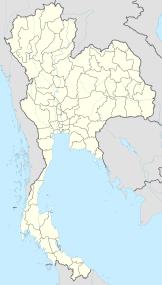Doi Suthep-Pui National Park
| Doi Suthep-Pui National Park | |
|---|---|
| อุทยานแห่งชาติดอยสุเทพ-ปุย | |
|
IUCN category II (national park)
|
|

Mae Sa waterfall
|
|
| Location within Thailand | |
| Location | Chiang Mai Province |
| Coordinates | 18°48′34″N 98°54′57″E / 18.80944°N 98.91583°ECoordinates: 18°48′34″N 98°54′57″E / 18.80944°N 98.91583°E |
| Area | 261.06 km² |
| Established | 1981 |
Doi Suthep–Pui National Park is a national park in Chiang Mai Province in Thailand. It includes Wat Phra That Doi Suthep, a Buddhist temple, and Bhubing Palace, the winter residence of King Bhumibol Adulyadej and family. The park is a protected area for flora, fauna, and habitat.
The former name of the area is Doi Oi Change. The name Doi Suthep was inspired by a hermit named Prarusiwasuthep who once lived in the local forest. In 1973, the Royal Forest Department proposed that this and 13 other forests be designated national parks. It became the 24th national park of Thailand in 1981. Today it includes about 261 square kilometers of territory.
The mountainous landscape is part of the Thanon Thong Chai Range. The three main peaks are Doi Suthep, Doi Buak Ha, and Doi Pui, the latter of which is tallest at 1685 meters. The climate is cool, with an average temperature around 20 to 23 °C. Low winter temperatures can reach 6 °C. Late summer is the rainy season, with daily precipitation.
The park is forested, with evergreen forest above 1000 meters and deciduous forest below. Mixed deciduous-evergreen forest occurs in gullies and along streams. Common trees include oaks, dipterocarps, and trees of the magnolia family. There are many waterfalls.
Animals in the park include the crocodile salamander (Tylototriton verrucosus). Mammals include the common muntjac (Muntiacus muntjak) and wild boar (Sus scrofa). More than 300 species of birds have been recorded in the area, including pheasants, eagles, parrots, bulbuls and minivets.
...
Wikipedia

